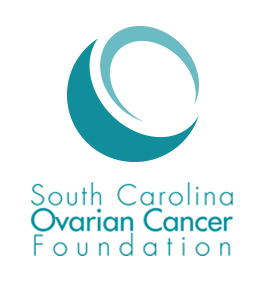What is ovarian cancer?
The information presented in this website is not intended in any way to be a substitute for medical advice or professional counseling. Please always include your health care providers in any decisions you make regarding changes in nutrition, exercise routine, and before you include complementary, alternative or integrative care into your treatment regimen.
United States & South Carolina Ovarian Cancer Statistics
The National Cancer Institute estimates that in 2017, about 22,440 new cases of ovarian cancer will be diagnosed and 14,080 women will die of ovarian cancer in the United States. Mortality rates for ovarian cancer have declined only slightly in the forty years since the “War on Cancer” was declared. Other cancers have shown a much greater reduction in mortality, due to the availability of early detection tests and improved treatments.
It is estimated that there will be 360 new cases diagnosed in South Carolina in 2017, and 230 women will die from ovarian cancer. Our goal is to provide support for these women and their families as well as the many long-term survivors across the state.
While the 8th most common cancer among US women, ovarian cancer is the 5th leading cause of cancer-related death among women in the US, and is the deadliest of gynecologic cancers.
The median age of death from ovarian cancer is 70. Ovarian cancer survival rates are much lower than other cancers that affect women. Five-year survival rates are commonly used to compare different cancers. The relative five-year survival rate for ovarian cancer is 46%. Survival rates vary greatly depending on the stage of diagnosis. Women diagnosed at an early stage—before the cancer has spread—have a much higher five-year survival rate than those diagnosed at a later stage. Unfortunately, only about 15% of ovarian cancer patients are diagnosed with early stage disease.
Relative survival statistics compare the survival of patients diagnosed with cancer with the survival of people in the general population who are the same age, race, and sex and who have not been diagnosed with cancer. Because survival statistics are based on large groups of people, they cannot be used to predict exactly what will happen to an individual patient. No two patients are entirely alike, and treatment and responses to treatment can vary greatly.
What is ovarian cancer?
Ovarian cancer is a growth of abnormal malignant cells that begins in the ovaries (women’s reproductive glands that produce eggs). Ovarian tumors can be benign (noncancerous) or malignant (cancerous). Although abnormal, cells of benign tumors do not metastasize (spread to other parts of the body). Malignant cancer cells in the ovaries can metastasize directly to other organs in the pelvis and abdomen (the more common way) or through the bloodstream or lymph nodes to other parts of the body.
Types of Ovarian Cancer
Different types of ovarian cancer are classified according to the type of cell from which they start.
Epithelial Tumors: About 90% of ovarian cancers develop in the epithelium, the thin layer of tissue that covers the ovaries. This form of ovarian cancer generally occurs in postmenopausal women.
Germ Cell Carcinoma Tumors: Making up about 5% of ovarian cancer cases, this type begins in the cells that form eggs. While germ cell carcinoma can occur in women of any age, it tends to be found most often in women in their early 20s. Many tumors that arise in the germ cells are benign.
Stromal Carcinoma Tumors: Ovarian stromal carcinoma accounts for about 5% of ovarian cancer cases. It develops in the connective tissue cells that hold the ovary together and those that produce the female hormones estrogen and progesterone. The two most common types are granulosa cell tumors and sertoli-leydig cell tumors. Unlike epithelial ovarian carcinoma, 70% of stromal carcinoma cases are diagnosed in Stage I.
Small Cell Carcinoma of the Ovary: Small cell carcinoma of the ovary (SCCO) is a rare, highly malignant tumor that affects mainly young women, with a median age at diagnosis of 24 years old. The subtypes of SCCO include pulmonary, neuro-endocrine and hypercalcemic. SCCO accounts for 0.1% of ovarian cancer cases. Approximately two-thirds of patients with SCCO have hypercalcemia. The symptoms are the same as other types of ovarian cancer.
For more information, you may visit:
- The National Cancer Institute’s Surveillance, Epidemiology and End Results Program
- SEER Stat Fact Sheets: Ovary Cancer
- The Center for Disease Control and Prevention’s National Program of Cancer Registries Website


